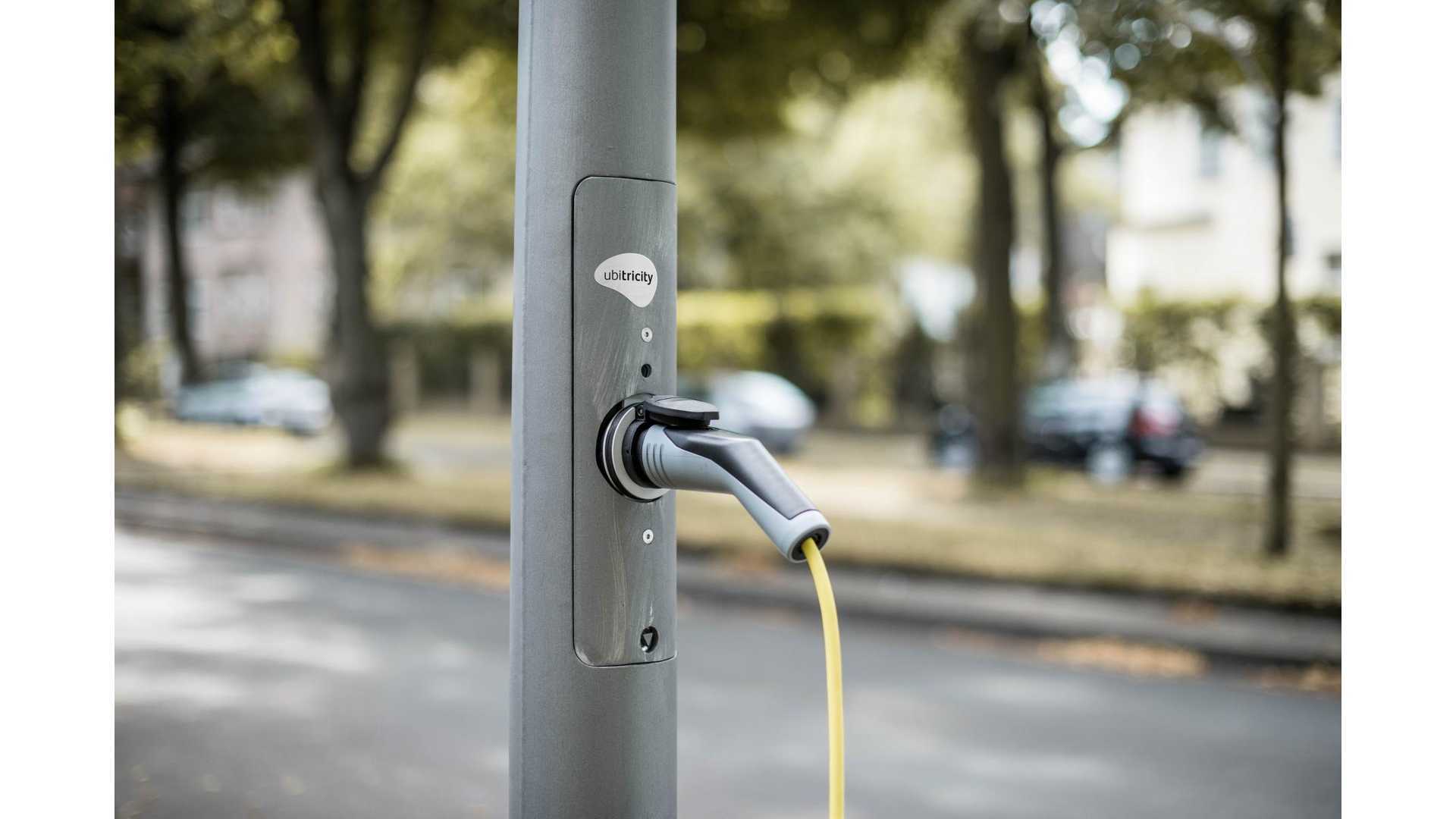
On-street charging is considered the most likely solution to the dilemma of urban drivers who are unable to install chargers at their homes. Streetside chargers come in many configurations, but perhaps the most intriguing that we’ve heard about is a charger that can be installed in existing lampposts.
 |
Above: Tesla charges via a lamppost. Photo: Ubitricity
This sounds like a good idea for several reasons—no additional street clutter, no moving parts, no need to run new electrical service. Today, several companies are competing in the space, and pilots are up and running in London, New York City, Kansas City and Valencia, Spain.
Here’s another reason to love a lamppost: according to a new study, the carbon footprint of manufacturing and installing a lamppost charger may be up to 88% lower than that of a standalone charging pillar.
The study, “Analysis of embodied carbon in on-street residential EV charging stations,” was commissioned by UK-based lamppost charging operator ChargeLight, and conducted by Sustainability Analytics. It aims to quantify how much carbon emissions could be avoided by deploying lamppost chargers instead of conventional charging pillars. The authors note that there are at least 300,000 lampposts in the UK suitable for retrofitting for charging purposes.
 |
Above: An on-street EV charger built into a lamp post. Photo: Transport and Energy
The study’s conclusion that lamppost chargers embody less carbon because they repurpose existing infrastructure chimes with common sense. Done properly, adding a charger to an existing post should certainly require less material, less time and less trouble—all of which translate to emissions.
“The resource requirements for new charge pillars is much higher than using the existing sources of on-street electricity, so it is no surprise that building new pillars will cause more carbon emissions,” said Henry le Fleming, founder of Sustainability Analytics.
Everything has an environmental footprint, and those who deploy EVSE often discuss the greenness of the electricity that their chargers will use. However, we seldom if ever hear about the relative carbon footprints of alternative types of hardware. ChargeLight would like to see government agencies consider embodied carbon as a criterion in charging infrastructure funding decisions.
“This study shows not only that lamppost charging is by far the lowest-carbon solution for on-street charging infrastructure, but it also underlines why embodied carbon should be a much higher priority consideration for government funding bodies and corporate entities when selecting technology solutions,” said ChargeLight Managing Director Tom Pakenham.
===
This article originally appeared in Charged. Author: Charles Morris. Source: Transport + Energy
===







